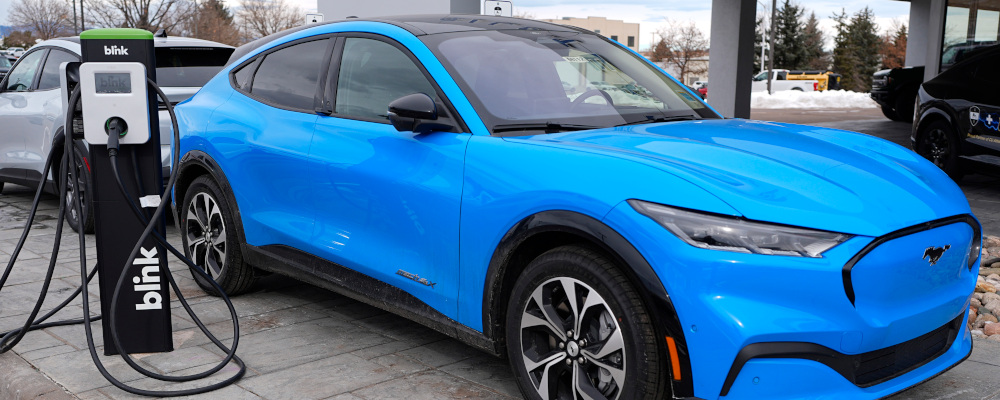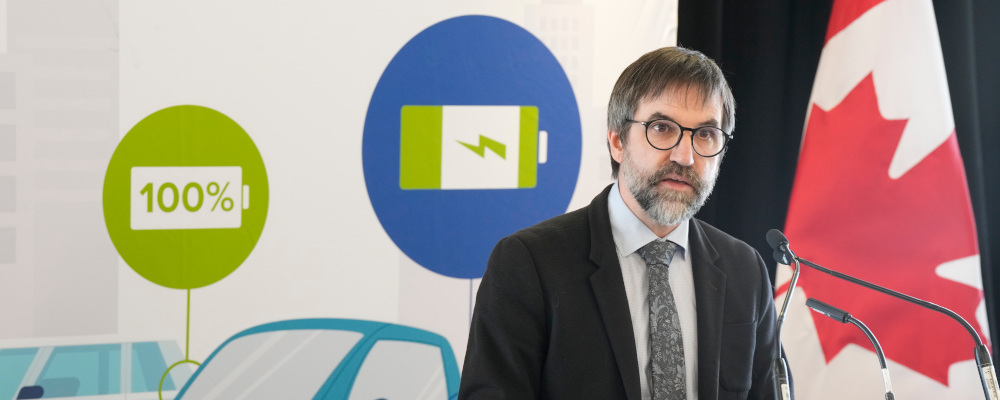In December 2023, Steven Guilbeault, the federal minister of environment and climate change, announced that all new auto sales in Canada must be zero-emission vehicles by 2035. The Liberal government’s mandate to restructure the auto sector is industrial policy on a massive scale. Whether one agrees or disagrees with the mandate, there is general consensus on the substantial nature of this government intervention.
Many people write about whether wholesale government mandates will benefit or harm Canadians. Pundits of all stripes invoke their favoured political and economic ideologies (whether it is capitalism, command socialism, dirigisme, or economic nationalism) when discussing the government’s actions. When evaluating the efficacy of these government mandates, I will refrain from using polarizing labels and instead apply a first principles approach to assess how successful products, markets and entire industries are created.
To illustrate this approach, I reference a classic essay written in 1958 by Leonard E. Read, “I, Pencil.” In this essay, Read questions whether anyone truly knows how to produce a pencil from scratch, a simple commodity that has been mass-produced for over 300 years.

Read describes a pencil’s components, including wood, lacquer, graphite, a bit of metal, an eraser, and labelling. He delves into the intricacies of each element needed for pencil production. For instance, harvesting wood involves using saws, trucks, railcars, radios, and other equipment. The extensive skills, knowledge, and capital needed to design and manufacture this equipment are immense. Motors, railcars, trucks, and radios all require mining and refining ores, engineering design, manufacturing, distribution, and deployment, just so loggers can do their job.
After the wood arrives at the sawmill, it is cut, machined, and dried. The equipment and expertise needed for this second step are too long to list. Power for the mill and kiln, generated by a hydroelectric dam and transmitted through power lines, requires its own design, construction, and operation—a testament to human ingenuity.
The pencil’s graphite must be mined and imported. Transforming raw graphite into the final pencil material involves mixing it with various compounds at the mine site, moulding, cutting, multiple drying rounds, and quality checks. The graphite then travels to the pencil plant, where it undergoes further mixing, moulding, and cutting and is then placed inside the pencil. Chemists, manufacturing engineers, production workers, millwrights, and truck drivers, not to mention the specialized equipment for graphite manufacturing, all play crucial roles in this intricate process.
The pencil lacquer, made up of various compounds, is applied to the wood, and then the pencil runs through a specialized machine multiple times to get the desired finish. Inputs, including the chemical process, labour, and co-ordination for this procedure are too lengthy to detail. The aluminium band around the pencil serves to secure the eraser.
The eraser must be abrasive enough to remove the graphite from the paper without damaging the paper itself. Over time, chemists have changed the eraser’s composition, using their knowledge of polymers and other chemicals. The intricate production of a simple pencil requires diverse material inputs from various sectors and production processes, all of which must be cost-efficient to keep the pencil’s cost very low.
The collective knowledge, capital, and materials needed to produce a pencil are dispersed among millions of individuals and companies throughout society. No single person, even the CEO of a pencil company, possesses anything but a tiny fraction of the knowledge needed to make a pencil.
Despite this diffusion, spontaneous order emerges, driven by individuals pursuing their own interests, needs, and wants. As Read argues, those involved in the pencil’s production from miners, loggers, and engineers to CEOs, perform their tasks not because they desire a pencil but for other motivations. Instead, each participant exchanges their specific ability for the goods and services they need, with the pencil potentially being one of many items in this exchange.
Creating a zero-emission vehicle sector is vastly more complicated than a pencil. Given this complexity, the feasibility of any single entity, including the government, to successfully direct an auto sector restructuring is doubtful. Sustainably producing zero-emission vehicles instead will require decisions, capital, and resources dispersed throughout society that spontaneously arrange themselves in a manner that responds to the demand for such vehicles.
The federal government has assured Canadians that they will help with this transition, primarily through government subsidies to consumers and businesses. Money is given to subsidize zero-emission vehicle purchases to make them a bit less costly.
A total of $43 billion will be provided by the federal, Ontario and Quebec governments in subsidies for three battery plants, enabling the companies to manufacture batteries profitability. As well, funding is provided for 42,000 electric chargers, which are in addition to the 40 percent of existing chargers that the government has already subsidized to help keep drivers’ vehicles on the road.
The federal government cannot be certain its decisions are correct. It might be better to not subsidize battery plants and instead relax restrictions on supply chain development. This would involve ensuring the supply of critical minerals, chemicals, electrode production, transportation services, testing equipment, recycling, and more.

The government’s approach bypasses the price system and diverts money from its best use. The subsidies are artificial. While companies may initially react to these subsidies, their response is contingent upon the government’s continued support.
Without the millions of people making individual decisions that are spontaneously organized through the price system to create a sustainable zero-emission car market, the federal government’s mandate will likely fail.
It is the height of hubris to assume that the government can restructure the auto industry in such a fundamental way. More likely, the massive subsidies will financially burden Canadians for many years, leading to a disarray of misallocated resources that will take years to correct. Indeed, the Parliamentary Budget Office estimates that the debt charges for the federal and participating provincial governments subsidizing battery manufacturing will increase the total cost by $6.6 billion over 10 years.
This poor policy will disproportionately hurt middle- and working-class Canadians, through lower employment and higher taxes that would otherwise be unnecessary.
Recommended for You

Crystal Smith and Eva Clayton: Indigenous natural resources development is an efficient, fair, and responsible way to advance economic reconciliation

Peter Menzies: Justin Trudeau’s legislative legacy is still haunting the Liberals

‘There are consequences to this legislation’: Michael Geist on why the Canada-U.S. digital services tax dustup was a long time coming

Rudyard Griffiths and Sean Speer: The future of news in Canada: A call for rethinking public subsidies



